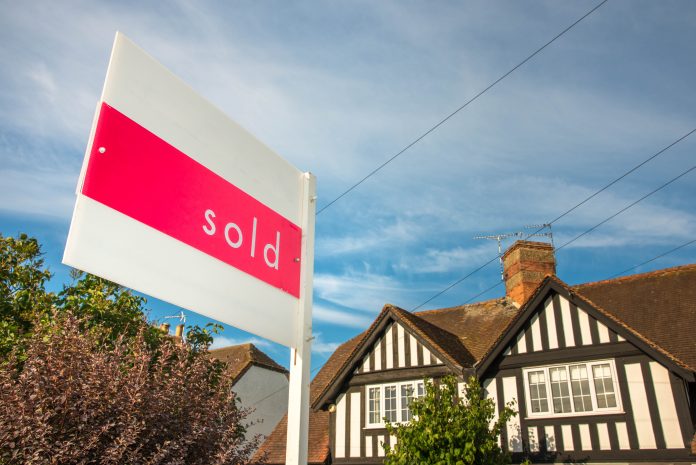The latest ONS HPIs for December 2022 show that on a non-seasonally adjusted basis, the average UK house price decreased by 0.4% between November and December 2022
The latest house price index for December 2022 has been released from the Office for National Statistics, showing that on a seasonally adjusted basis, the average UK house price decreased by 0.2% between November and December 2022, following an increase of 0.5% in the previous month.
On a non-seasonally adjusted basis, average UK house prices decreased by 0.4% between November and December 2022, while average UK house prices increased by 0.3% during the same period 12 months ago.
The average UK house price was £294,000
The average UK house price was a £26,000 increase than the same time in December 2021, but only a slight increase from November 2022’s average of £295,000.
In a regional breakdown, average house prices in England increased to over the year to £315,000 (10.3%), to £222,000 in Wales (10.3%), to £187,000 in Scotland (5.7%) and to £175,000 in Northern Ireland (10.2%).
Both Scotland and London recorded the lowest annual growth compared to regional peers, with London as the lowest performing English region, with prices only increasing by 6.7% in the last year.
Annual growth in house prices was strongest in the East Midlands where prices increased by 12.3% in the 12 months to December 2022.
The average UK house price annual percentage change was 9.8% in the year to December 2022, down from 10.6% in the year to November 2022.
Industry analysis to the ONS figures
Andy Sommerville, director at Search Acumen, the property data and insight provider, commented “In line with the macro-economic outlook that begun in 2022 and has continued into this year, it is unsurprising to see a small decrease in house price values this month. With persistent high inflation, the continued cost-of-living crisis, and energy prices remaining high, we are anticipating similar figures for the next few months despite a softer landing for the economy than expected in December noting an underlying resilience.
“As property values bear the brunt of this challenging economic environment, for homebuyers and sellers this translates to heightened risk of their purchase collapsing, with down valuations and expiring mortgage offers on the rise, not to mention those pulling out of a sale entirely. This could cause stagnation in the housing market, having a serious impact on the economies that rely on it, as well as consumer confidence.
Others took a more holistic view of the HPIs December 2022
Andy Mielczarek, founder and CEO of SmartSave Bank, advised caution when considering the findings of the December 2022 HPIs: “House price growth was clearly slowing by the end of last year. But it is crucial we remember that the ONS’s house price data tracks a couple of months behind other indices, most of which are suggesting that prices are now in decline. Indeed, perhaps the headline from the ONS data was that the average UK house price dropped by £2,000 between November and December 2022. As a combination of the cost-of-living crisis and rising interest rates dampens buyer demand, the question is just how far will house prices fall?
“Those looking to move home, or take their first step onto the property ladder, will be watching on with great interest. No doubt, many will sit tight in the hope that prices become more and more affordable over the coming months. But in the meantime, they must be diligent in how they are managing their own finances, particularly their savings.
“While keeping a keen eye on price movements, would-be buyers could also focus on building up their deposit. Right now, we are seeing great interest in one- and two-year savings accounts which, thanks to rising interest rates, are now providing increasingly attractive rates to those ready to put aside some or all of their cash savings to allow it to gain value. If indeed house prices continue to slide, those who use this time wisely to boost their savings will find themselves in a stronger position when they choose to enter the market.”
As the market continues recovery from economic and political turbulence, buyers may finally feel ready to take the leap
Nick Leeming, chairman of Jackson-Stops, said: “Despite the brakes on house price growth, the market is showing green shoots as we head closer towards Spring. On an annual basis, sellers continue to be in a fortunate position, still able to achieve strong returns with the average house price £26,000 higher than a year prior. Positively for buyers, mortgage availability hit a six-month high in February with more than 4,000 deals available, returning to levels not seen since the mini-budget.
“This will be a welcome relief to a significant proportion of buyers who require a mortgage to complete their purchase, or had been put off from starting their search altogether. Even with the average mortgage rate remaining higher than recent years; currently the average two-year fixed rate is 5.36%* while if we look further back between 1995 and 2022 the average mortgage rate was 5.62%. This proves implicitly that mortgage rates since 2008 have been the exception, not the rule.
“Last week’s appointment of a new minister to oversee the housing brief, the 14th in 12 years, will be another adjustment for the market to contend with but we don’t expect an immediate impact to be felt. Michael Gove remains at the helm of the Department of Levelling Up, Housing and Communities, driving forward housing policy and a strategy for the future of the sector that should continue to provide a level of stability that the market has come to rely on.”














